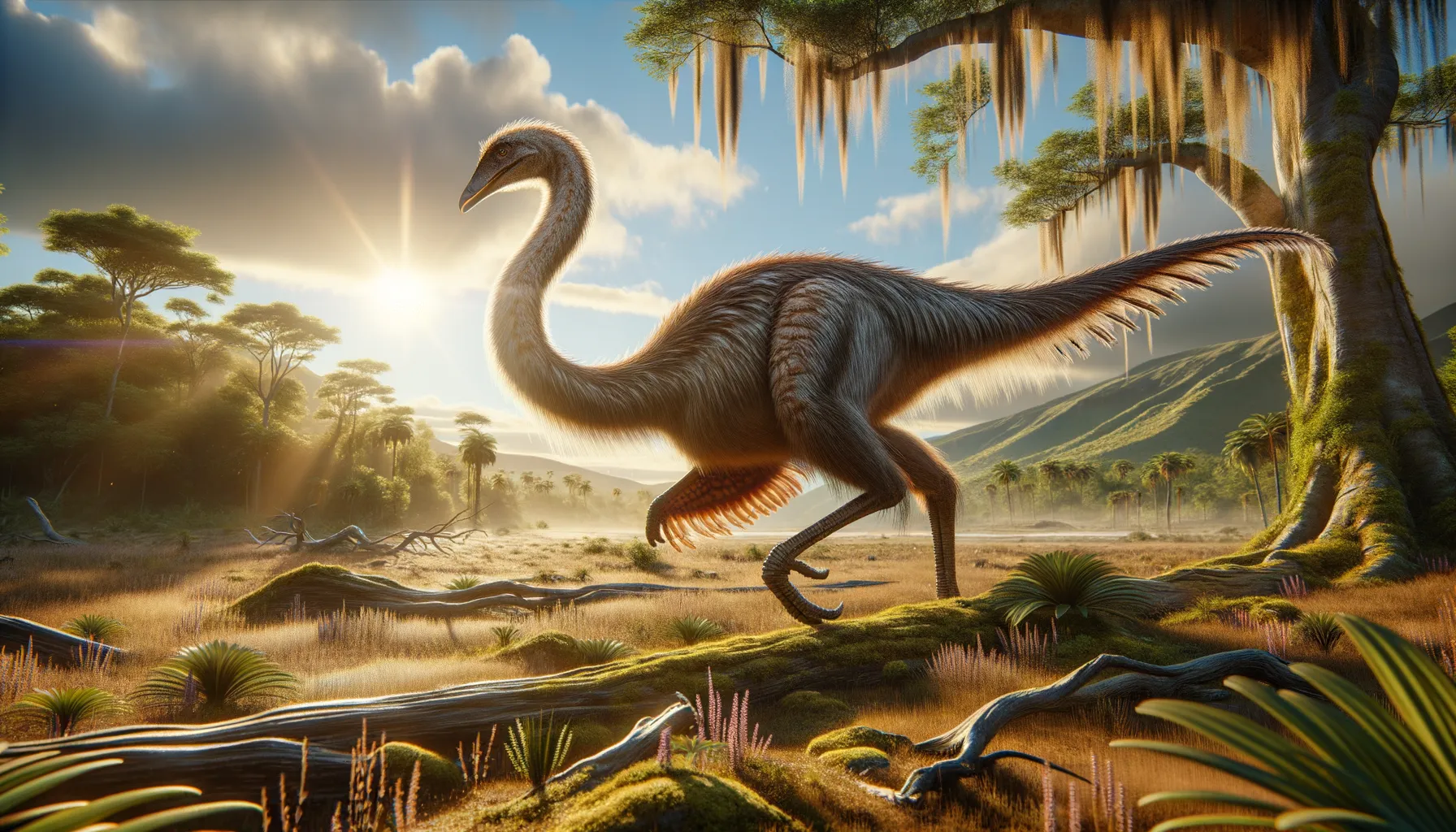
Gallimimus
The ultimate sprinter of the dinosaur world!
Period
Cretaceous
Length
Up to 20 feet long.
Height
Around 6.6 feet tall at the hip.
Weight
Approximately 440 pounds.
Gallimimus was a swift, ostrich-like dinosaur from the Late Cretaceous period. It belonged to the ornithomimid family, known for their bird-like appearance and features. With a long neck and legs, it could reach high speeds, making it one of the fastest dinosaurs. Aside from its notable speed, Gallimimus's long arms and fingers were adapted to catch small prey and access various food sources, demonstrating its adaptability.
Diet
Gallimimus was likely an omnivore, using its beak to forage for plants, insects, and small animals. Its diet could vary based on availability, showcasing adaptability in its feeding habits.
Hunting
While it could hunt small prey, Gallimimus may have relied more on scavenging or foraging due to its lack of powerful jaws. The dinosaur's keen eyesight and speed would have been advantageous in detecting and catching small, agile prey.
Environmental challenges
Gallimimus needed to navigate the diverse landscapes of the Late Cretaceous, which included vast plains and dense forests. It faced competition for resources with other herbivores and carnivores. Climatic changes and ecological shifts posed a constant challenge, as they did for many dinosaur species. Successful adaptation strategies were necessary for its survival amidst these dynamic environments.
Speed
Gallimimus could run at speeds of up to 60 km/h.
Lifespan
Estimated to live up to 10 to 15 years.
First discovery
First discovered in Mongolia in the 1960s.
Fun Facts
- Gallimimus was a dinosaur that lived about 70 million years ago during the Late Cretaceous period.
- The name Gallimimus means 'chicken mimic' because its neck is thought to resemble that of a chicken.
- This dinosaur was about the size of a modern giraffe, measuring up to 20 feet long.
- Gallimimus had long legs and is believed to have been one of the fastest dinosaurs, possibly reaching speeds of up to 30-40 miles per hour.
- Unlike many other dinosaurs, Gallimimus likely did not have teeth; instead, it had a beak for eating plants, insects, and small animals.
- Gallimimus was an ostrich-like dinosaur with a small head, long neck, and a long, slender tail.
- This dinosaur was featured in the popular movie 'Jurassic Park', where it was depicted as a fast-moving herbivore.
Growth and Development
Gallimimus likely experienced rapid growth during its early years to escape predation. As it matured, it developed longer limbs and neck, optimizing it for speed and reaching high foliage. The species' growth patterns would have been influenced by both genetic factors and environmental conditions.
Habitat
Gallimimus inhabited open plains and semi-arid regions, requiring access to both water and vegetation. These environments provided ample running space, crucial for escaping predators. The dinosaur's adaptability allowed it to exploit various ecological niches across its range.
Interaction with other species
Gallimimus shared its habitat with a variety of other dinosaur species, leading to both competitive and mutualistic interactions. While it had to compete with other herbivores for food, it could also benefit from alarm signals provided by other species. Its presence in mixed-species groups may have offered some protection against predators.
Natural lifespan
Gallimimus had a natural lifespan of about 10 to 15 years.
Reproduction
Gallimimus likely laid eggs, similar to modern birds and other theropods. Nesting sites would have been strategically chosen for safety and warmth. Parental care, if present, might have involved guarding the nest and assisting hatchlings.
Social behaviour
Gallimimus might have traveled in groups for safety and social interaction. Group living provided multiple sets of eyes against predators and increased foraging efficiency. Communication within these groups could have involved visual displays and vocalizations.
Fossil locations
Fossils of Gallimimus have been primarily found in the Nemegt Formation in Mongolia, a site rich in Late Cretaceous dinosaur remains. These locations provide critical insights into the diverse ecosystems that existed during the time of Gallimimus. The discovery of well-preserved fossils has helped reconstruct its physical appearance and behavioral patterns.
